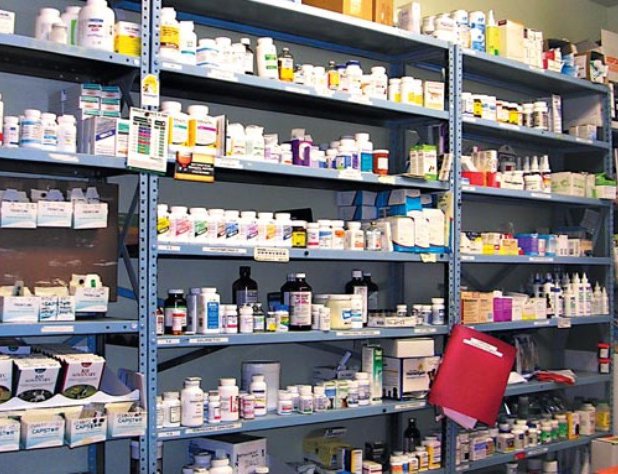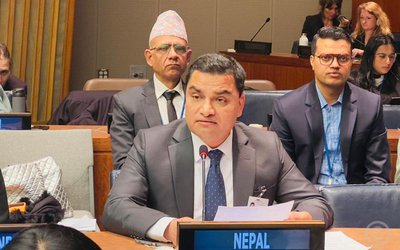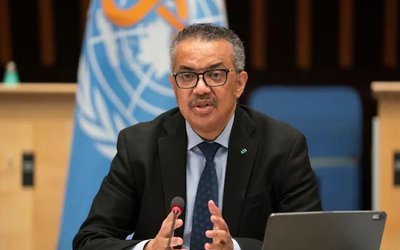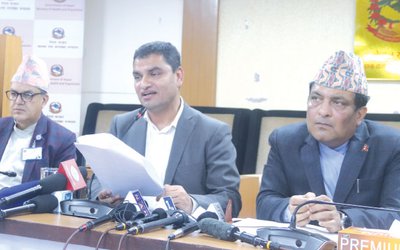
In the United
Kingdom of the 21st Century, there is still some remnant of the original
National Health Service (NHS) set up by the Attlee Government which came into
power after World War II. Though the NHS has had its ups and downs, it still
continues to provide widespread health service to the people of the UK. In the setting of the 'Socialised medicine
'of the UK, the practitioners cannot prescribe as they want but have to do so
from the approved list of medicines. In
this there are a limited number of drugs of proven efficacy and not a plethora
of new ones. Tonics are out and if a
doctor prescribes it unnecessarily, s/he is always subject to be made to pay
for it! The doctor is discouraged from
prescribing too much medication.
The elevated cost
of medicines in use has been exemplified by a list which the US Senator of
Vermont Bernie Sanders posted in Facebook.
It showed that there is a vast
difference between the drug prices in Canada, where there is a somewhat 'State
Service' for health and America where it is private enterprise provided by
independent organisations and individuals.
In one particular instance, the price of a particular drug in the States
was, eight times what it cost in Canada!
Such is the situation in a highly
developed country where the pharmaceutical concerns have to cater to the
demands of the organisations or individual practitioners using their
products. They have to provide for the
'Pharmaceutical Lunches or Dinners at times of medical conferences or get togethers. Such a situation is very much prevalent in
Nepal too.
Gagan K Thapa, during the course of his ten months as Health Minister tried to bring about many changes in the Health & Population Ministry of Nepal. How much of what he initiated will be implemented and remain in five years or even in one year's time is any ones guess? During the course of his visit to WHO in May 2017 our Health Minister had made a plea for general reduction in the cost of medicine and medical accessories. He stated that some importers were charging as much as 2200 times the actual cost. He divulged too that some preliminary discussions had taken place with concerns in India and Bangladesh. His intention, like that of the Govt. of India was to consider the prospect of buying medicines in bulk and supplying them at the reduced costs to the population at large. A very noble thought if implementable.
Another rumour doing the rounds in Kathmandu is that the Nepali pharmaceutical producers are demanding that no medicine that is manufactured outside Nepal should be allowed to be imported. A statement in Abhiyan recently stated "Import restrictions on foreign medicines are important for the development of Nepali pharmaceutical industry." However, a fact to be remembered is that being a member of the World Trade Organisation, we cannot arbitrarily stop imports from other member states.
The moot question at this stage is whether the medicines that we produce in our country are up-to-standards. Does the tablet or the teaspoonful contain the stated amount of the medication which should be supplied to the patient? Is its quality at par with those produced in countries which ensure the purity and effectiveness of their products? What concerns us common folk is the identity of the authority responsible to guarantee the quality of the essential and life saving medicines produced here in Nepal.
There is very little capability in the governmental set up in Nepal to test the composition and purity of the drugs. How many batches of how many formulations are produced in the country and what is the capability in numbers and reliability of efficiency in this regard? The number of companies times their products and then the batch of each gives an idea of the numbers involved. If only drugs 'produced in Nepal' are permitted to be consumed by the ill in Nepal, then who is the guarantor in this regard? It is obligatory for the Department of Drug Administration to ensure the quality of the drugs utilised in this country whether they are produced within or outside of Nepal. Testing just 1-2% of the drugs in use in the country has no meaning nor credibility. It is noteworthy however that some action has been taken against Nepali concerns Arya & SR Laboratories because of misconduct in production. In a recent case of Relyte (ORS) and Pantoprazole the DDA tested the medicines in May 2017 when the expiry date was just two months away. Should such unhealthy practices to just fool the public be banned? This is jharo halne kam!
What I would like to state however is that not all the medicines imported into the country are products par excellence. There have been various instances of substandard drug supply from India. Some years ago the then functioning concern Ranbaxy had all its drugs banned from US. Substandard drugs for AIDS were supplied by Indian concerns to East Africa. Even a drug regulator in India declared that 60% of medicines were substandard. Another source states that one in seven drugs is substandard. The general trend is that India has become a hub for fake medicines. During the course of last one month the Ausadi Bebastha Bibhag (ABB) has pronounced and made the Ram Dev Patanjali concern of India withdraw first four and two weeks later six ayurvedic preparations made by Dibya Pharmacy in Uttarakhand. These products being marketed in Nepal were found to be substandard. The silence of ABB regarding the quality of allopathic medicines is a cause for worry! This is not to state that our producers of medicines are all sincere. There have been reports of substandard or 'about to expire' products being supplied to government health posts so that they expire by the time they reach there. We can only pray to Lord Pashupatinath to save us from all these hazards.
The author writes fiction under the name of Mani Dixit. Website: www.hdixit.org.np. Twitter: @manidixithd

Hemang Dixit
The author writes fiction under the name of Mani Dixit. Website: www.hdixit.org.np. Twitter: @manidixithd
- Top Heavy
- Sep 20, 2023
- Most Able?
- Sep 04, 2023
- Changing Times
- Aug 21, 2023
- Nepali Shenanigans
- Aug 03, 2023
- Budget Naataks
- Jun 29, 2023















